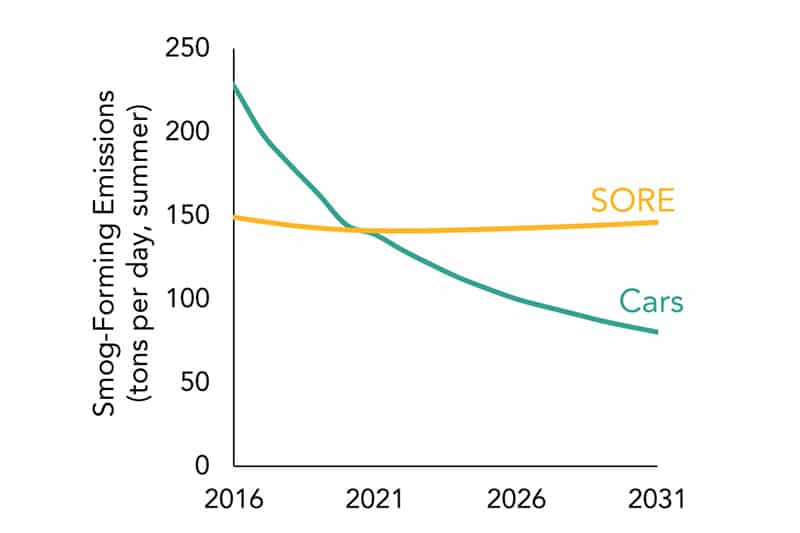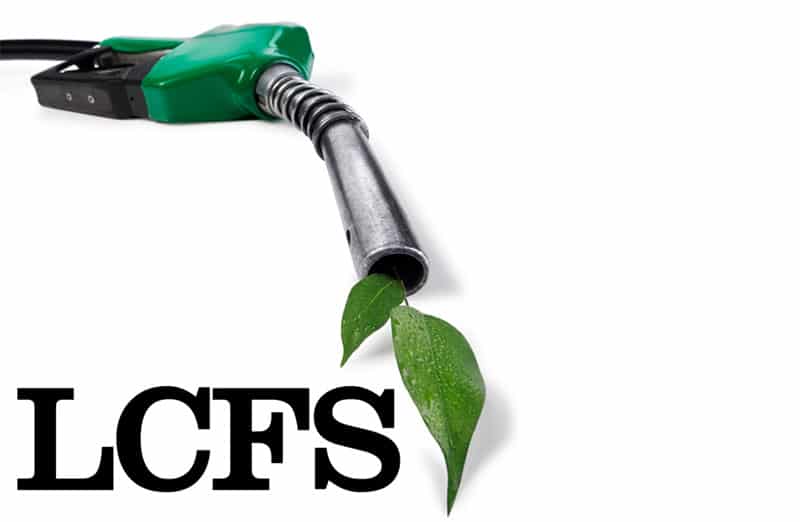This analysis is based largely on the “OFF-ROAD COMPRESSION-IGNITION ENGINE EMISSION REGULATIONS” under the Canadian Environmental Protection Act, 1999.
This guidance specifically covers a multitude of different scenarios that each have unique requirements including:
- Products sold concurrently in the USA and Canada using EPA certified engines.
- Products sold concurrently in the USA and Canada using EPA TPEM exempted engines (non-certified engines) in limited quantities covered by an EPA OEM manufacturer notification package.
- Canada Unique products sold exclusively in Canada using EPA certified or non-certified engines.
- Canada Unique products sold exclusively in Canada using Canada TPEM engines.
Importing Engines to Canada
Canadian Regulations established under the “Canadian Environmental Protection Act, 1999” apply to any non-road diesel engines and equipment. The regulations apply to:
- Engines imported into Canada; and
- Engines manufactured in Canada that are “transported within its borders”
These regulations do not apply to diesel engines that are subject to the On-Road Vehicle and Engine Emission Regulations, or for non-road engines used for the following:
- Engines used to propel Marine Vessels
- Engines used for Locomotives
- Engines used to propel Aircraft
- Engines used in stationary applications
- Engines used for underground mining
- Engines exempted for use in Competition, for National Defense,
Any person importing an engine (Importer not necessarily Manufacturer) subject to the regulations (including any engine installed in a machine) must submit a signed declaration to the Minister before importation. This has been the policy established since the “Canadian Environmental Protection Act, 1999” and applies to all engines regardless of their particular scenario.
An importation declaration must be filled out and submitted in advance of shipping products. Based on the scenario or the type of engine you are importing additional information will also be required.
The following types of engines are subject to importation declarations and may be subject to the “OFF-ROAD COMPRESSION-IGNITION ENGINE EMISSION REGULATIONS”:
- Engines covered by a valid EPA certificate and sold concurrently
Concurrent EPA certified engines are subject to declaration. Each engine model must have a current model year EPA engine family name covered by a valid (non-expired) EPA certificate. No evidence of conformity is required for these engines.
- Engines covered by EPA TPEM program and sold concurrently
Concurrent EPA TPEM engines are subject to declaration. Each engine model and equipment must be covered by an OEM TPEM notification required by 40CFR Part 1039.625, subject to EPA quantity limitations, EPA engine and equipment labeling, and EPA reporting. All equipment sold in this category labeled consistent with the EPA regulations may be subsequently re-imported to the USA. Each engine must be identical to engine models covered by a previous model year EPA engine family name with an expired previous model year EPA certificate. No evidence of conformity is required for these engines. Canada transition engine annual reporting applies only to the portion of these engines imported to Canada.
- Type 3 Canada-unique Engines
These engines are not listed on a valid EPA certificate and/or not concurrently sold in the USA (excluding Canada TPEM engines). Canada unique engines imported are subject to declaration and are also subject to the “OFF-ROAD COMPRESSION-IGNITION ENGINE EMISSION REGULATIONS”. Importers must submit the evidence of conformity prior to importation. For this type of Canada-unique engine (TYPE 3), this evidence includes the valid EPA certificate. Canada unique engines must be labeled in accordance to bi-lingual Canada engine labeling requirements (see appendix A). Any engine that includes the NEM does not require a certificate of conformity. Canada transition engine annual reporting applies.
- Type 1 Canada-unique Engines
These engines are covered by a valid EPA certificate and are sold in Canada and NOT in the USA. Canada unique engines imported are subject to declaration and are also subject to the “OFF-ROAD COMPRESSION-IGNITION ENGINE EMISSION REGULATIONS”. Importers must submit the evidence of conformity prior to importation. For this type of Canada-unique engine (TYPE 3) importers must include evidence sufficient to what must be submitted to the EPA for an EPA certificate of conformity. Canada unique engines must be labeled in accordance to bi-lingual Canada engine labeling requirements (see Appendix A). Any engine that includes the NEM does not require a certificate of conformity.
- Canada-unique TPEM Engines
Canada-unique TPEM equipment are models not offered for sale in the USA. Equipment imported is subject to declaration. Similar to the US EPA program, the Environment Canada also has a TPEM program. The Canadian TPEM program does not strictly limit the quantity of engines that can be used, but rather requires the proportion of transition engines in Canada is similar to the proportion of flex engines in the USA. Abuse shall be strictly monitored and future regulation changes may result. Canada requirements for emissions compliance are consistent with the EPA requirements in 40 CFR Part 1039.625, and shown in Appendix D. Canada unique engines must be labeled in accordance to bi-lingual Canada engine labeling requirements (see Appendix A). Engines and equipment in this category could not be re-imported to the USA, and should be excluded from the EPA TPEM compliance reporting. Importers must submit the evidence of conformity prior to importation.
- Engines used for Transportation Refrigeration Units
TRU engines imported are subject to declaration. Engines used to power a TRU are not subject to on-highway standards and are subject to alternate standards in the “OFF-ROAD COMPRESSION-IGNITION ENGINE EMISSION REGULATIONS”:. This applies to the 2012 model year for engines with a gross power of less than 37kW and the 2012 to 2015 model years for engines with a gross power between 37 and 56kW. These standards are described in detail in the EC guidance.
- Stationary Engines
Stationary engines imported are subject to declaration. Additional emission requirements may apply based on location of use and regulation established province to province. Evidence of conformity may apply, so please contact ECO with specific scenarios for further discussion.
- Replacement Engines
Replacement engines imported are subject to declaration. A replacement engine’s standards are determined specifically by the equipment. Replacement engines can be imported for the purposes of ‘normal’ inventory. Evidence of conformity requirements should be reviewed with ECO on a case by case basis.
- Engines manufactured in Canada
Engines and equipment using such engines manufacturer in Canada do not require declaration. Engines must be certified by the Environment Canada subject to the “OFF-ROAD COMPRESSION-IGNITION ENGINE EMISSION REGULATIONS”. Engines include the National Emissions Mark (NEM) and be labeled in both languages. Any engine that includes the NEM does not require a certificate of conformity.
Importation Declaration Documents:
Any company importing an engine must submit a signed declaration to the Minister prior to importation using the format below. This is the specific responsibility of the importer (in the event that the manufacturer is not directly the importer). This declaration must contain the following:
- (a) the name and street address and, if different, the mailing address of the importer;
- (b) in respect of an engine that is not installed in or on a machine, the name of the manufacturer and the make, model and model year of the engine;
- (c) in respect of a machine, the name of the manufacturer and the make, model and type of the machine, as well as the name of the manufacturer and the make, model and model year of the engine that is installed in or on the machine;
- (d) the expected date of importation;
- (e) the business number assigned to the company by the Minister of National Revenue, and
- (f) a statement that the engine bears the national emissions mark, or that the company is either able to produce the evidence of conformity referred to in section 16 or complies with section 17
If you are a company and you import more than 50 engines (including any engine installed in a machine) in a calendar year, you can request to submit bulk declarations, in place of individual declarations.
Evidence of Conformity Documents:
Any person may submit the evidence of conformity documents. These documents are required to supply assurance that the engines meet the “OFF-ROAD COMPRESSION-IGNITION ENGINE EMISSION REGULATIONS” for engines not labeled with the NEM.
Type 1 Canada Unique engines listed on a valid EPA certificate evidence of conformity consists of:
- A copy of the EPA certificate.
- A copy of the records submitted to the EPA in support of the application for the issuance of the EPA certificate. (see appendix B or C)
- A statement of compliance letter. (to be signed by a company officer of the manufacturer or any authorized agent direct or third party who physically resides in Canada)
- A copy of the engine emissions control system label (subject to the EPA label requirements written in English).
- A copy, in both official languages, of the emission-related maintenance instructions.
Type 3 Canada Unique engines not listed on a valid EPA certificate evidence of conformity consists of:
- Information equivalent to what must be submitted to the EPA to obtain a certificate is required. (see appendix B or C)
- A statement of compliance letter. (to be signed by a company officer of the manufacturer or any authorized agent direct or third party who physically resides in Canada)
- An engine information label. (subject to the EC label requirements and bilingual in English and French)
- A copy, in both official languages, of the emission-related maintenance instructions.
Additionally, these engines that are not covered by an EPA certificate of conformity or that are not sold concurrently in Canada and the U.S. (i.e. Canada-Unique), the evidence of conformity shall be obtained and produced “in a form and manner that is satisfactory to the Minister” prior to importation of the subject engine(s) or machine(s).
Keep records of all documentation submitted to Environment Canada including:
- a copy of the annual report
- the evidence of conformity for a period of eight years following importation.
- if the engine is imported, the date of import, or
- in any other case, the end of the calendar year that corresponds to the model year of the engine.
If the Minister makes a written request to the company for a record the company must submit it to the Minister in either official language
(a) within 40 days after the day on which the request is made to the company; or
(b) within 60 days after the day on which the request is made to the company, if the record must be translated from a language other than French or English.


